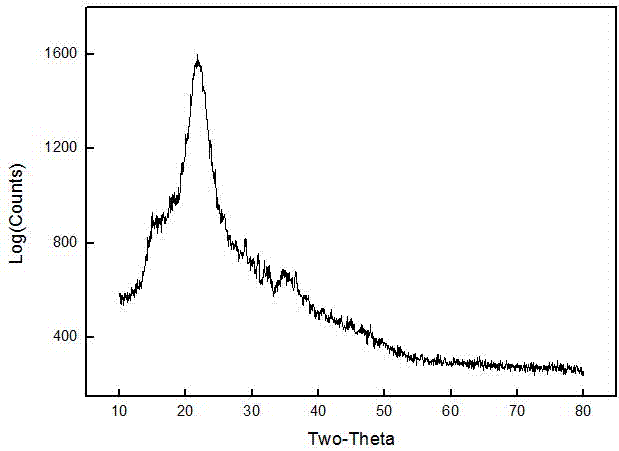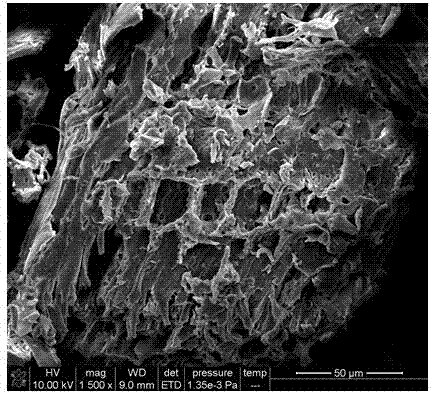Preparation method for modified banana stalk biomass charcoal
A banana stem and biochar technology, applied in chemical instruments and methods, water/sludge/sewage treatment, adsorbed water/sewage treatment, etc., can solve problems such as unfavorable ecological environment sustainable development, environmental pollution, etc., to achieve Improving soil structure and performance, simple process, and improving soil fertility
- Summary
- Abstract
- Description
- Claims
- Application Information
AI Technical Summary
Benefits of technology
Problems solved by technology
Method used
Image
Examples
Embodiment
[0021] (1) Cut the banana stalk in the middle of the banana fruit string into small pieces, squeeze out the internal moisture of the banana stalk through a drum juicer, then place the obtained banana stalk residue in an oven, and dry it at 70°C dry, and finally crushed with a universal crusher and passed through a 60-mesh sieve to obtain banana stalk powder.
[0022] (2) Place the banana stalk powder prepared in step (1) in an Erlenmeyer flask, and add a magnesium chloride aqueous solution with a concentration of 1.1mol / L according to the solid-to-liquid ratio of banana stalk powder and magnesium chloride aqueous solution of 1:12.5g / mL , seal the Erlenmeyer flask with a cap and then oscillate, the oscillating frequency is 150r / min, the temperature is 30°C, the oscillating time is 1 hour, then seal and impregnate for 23 hours, filter, and the obtained filter residue is dried in an oven at 105°C, The magnesium chloride modified banana stalk powder was prepared.
[0023] (3) Put...
PUM
 Login to View More
Login to View More Abstract
Description
Claims
Application Information
 Login to View More
Login to View More - R&D
- Intellectual Property
- Life Sciences
- Materials
- Tech Scout
- Unparalleled Data Quality
- Higher Quality Content
- 60% Fewer Hallucinations
Browse by: Latest US Patents, China's latest patents, Technical Efficacy Thesaurus, Application Domain, Technology Topic, Popular Technical Reports.
© 2025 PatSnap. All rights reserved.Legal|Privacy policy|Modern Slavery Act Transparency Statement|Sitemap|About US| Contact US: help@patsnap.com



